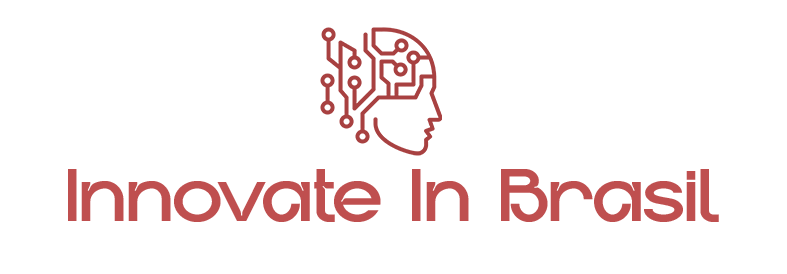In today’s fast-paced digital world, staying organized has become more challenging than ever before. With countless tasks, appointments, deadlines, and responsibilities competing for our attention, the need for effective personal organization software has never been more critical. These powerful digital tools have revolutionized how we manage our daily lives, transforming chaos into clarity and overwhelm into achievement.
Understanding Personal Organization Software
Personal organization software encompasses a broad category of digital applications designed to help individuals manage various aspects of their lives more efficiently. These sophisticated tools go beyond simple to-do lists, offering comprehensive solutions for task management, calendar integration, note-taking, project planning, and goal tracking. The evolution of these applications has been remarkable, progressing from basic digital calendars to intelligent systems that learn from user behavior and provide personalized recommendations.
The fundamental purpose of personal organization software is to serve as a central hub for all your important information, deadlines, and commitments. By consolidating these elements into a single, accessible platform, users can reduce mental load, minimize the risk of forgotten tasks, and create a more structured approach to both personal and professional responsibilities.
Core Features That Define Exceptional Organization Software
When evaluating personal organization software, several key features distinguish outstanding applications from mediocre ones. Task management capabilities form the backbone of any effective organizational tool, allowing users to create, categorize, prioritize, and track the completion of various activities. Advanced systems offer hierarchical task structures, enabling users to break down complex projects into manageable subtasks.
Modern organization software typically includes cross-platform synchronization, ensuring that your data remains accessible whether you’re using a smartphone, tablet, laptop, or desktop computer. This seamless integration across devices has become essential in our multi-device world, where flexibility and accessibility are paramount.
Another crucial feature is collaboration functionality, which allows users to share projects, assign tasks to team members, and maintain transparency in group efforts. This capability has become increasingly important as remote work and distributed teams have become more common.
Advanced Analytics and Reporting
Sophisticated personal organization software often includes analytics features that provide insights into productivity patterns, time allocation, and goal achievement rates. These data-driven insights help users identify areas for improvement and optimize their organizational strategies over time.
Popular Categories of Personal Organization Software
The landscape of personal organization software can be broadly categorized into several distinct types, each serving specific organizational needs. Task and project management applications focus primarily on helping users track and complete various activities, often featuring Kanban boards, Gantt charts, and deadline tracking capabilities.
Note-taking and knowledge management systems emphasize information capture, organization, and retrieval. These applications excel at helping users collect ideas, research findings, meeting notes, and other important information in a searchable, structured format.
Calendar and scheduling software specializes in time management, offering features like appointment scheduling, recurring event management, and integration with email systems. Many modern calendar applications also include intelligent scheduling assistants that can automatically find optimal meeting times.
Habit tracking and goal management tools focus on helping users establish and maintain positive behaviors while working toward long-term objectives. These applications often include motivational elements like progress visualization and achievement badges.
All-in-One Solutions
Comprehensive organization platforms attempt to combine multiple organizational functions into a single application. These all-in-one solutions can be particularly appealing for users who prefer managing everything from one central location, though they may sacrifice some specialized functionality for the sake of integration.
Benefits of Implementing Personal Organization Software
The advantages of using personal organization software extend far beyond simple task tracking. Increased productivity represents perhaps the most significant benefit, as these tools help users focus on high-priority activities while ensuring nothing important falls through the cracks. By providing clear visibility into upcoming deadlines and commitments, organization software enables better time management and resource allocation.
Stress reduction is another major advantage, as the mental burden of remembering countless details and deadlines is transferred to a reliable digital system. This cognitive offloading allows users to focus their mental energy on creative and strategic thinking rather than administrative concerns.
Personal organization software also promotes better work-life balance by helping users establish clear boundaries between professional and personal commitments. Many applications allow for separate project spaces or categories, enabling users to maintain distinct organizational systems for different life areas.
The historical tracking capabilities of these tools provide valuable insights into personal productivity patterns and goal achievement over time. This data can be instrumental in making informed decisions about future commitments and identifying areas for improvement.
Choosing the Right Personal Organization Software
Selecting the most appropriate personal organization software requires careful consideration of individual needs, preferences, and existing workflows. Complexity requirements vary significantly among users, with some preferring simple, minimalist interfaces while others benefit from feature-rich applications with extensive customization options.
Integration capabilities should be evaluated based on your existing digital ecosystem. If you heavily rely on specific email clients, cloud storage services, or other productivity tools, ensuring seamless integration can significantly enhance the overall effectiveness of your organizational system.
Cost considerations range from free applications with basic functionality to premium subscriptions offering advanced features and increased storage capacity. It’s important to evaluate whether the additional features justify the ongoing expense, particularly for individual users versus teams or organizations.
Trial Periods and Migration
Most reputable personal organization software providers offer trial periods or free tiers, allowing users to thoroughly evaluate the application before making a commitment. Taking advantage of these opportunities is crucial, as the subjective experience of using the software often differs significantly from feature comparisons alone.
Implementation Strategies for Maximum Success
Successfully adopting personal organization software requires more than simply downloading an application and hoping for the best. Gradual implementation often proves more effective than attempting to digitize your entire organizational system overnight. Start by transferring a small subset of tasks or projects, allowing yourself time to become comfortable with the interface and features.
Consistent usage patterns are essential for realizing the full benefits of personal organization software. Establishing regular review sessions, whether daily, weekly, or monthly, helps ensure that your digital organizational system remains current and actionable.
Customization and optimization should be an ongoing process rather than a one-time setup activity. As you become more familiar with the software’s capabilities and your own organizational preferences evolve, continue refining your system for maximum effectiveness.
Future Trends in Personal Organization Software
The personal organization software landscape continues to evolve rapidly, driven by advances in artificial intelligence, machine learning, and user experience design. AI-powered assistance is becoming increasingly sophisticated, with applications beginning to offer intelligent task prioritization, automatic scheduling suggestions, and predictive deadline management.
Voice integration and natural language processing are making organization software more accessible and intuitive, allowing users to add tasks, schedule appointments, and query their organizational systems using conversational commands.
Enhanced collaboration features are expanding beyond simple task sharing to include real-time editing, integrated communication tools, and intelligent workload distribution among team members.
Overcoming Common Implementation Challenges
Despite the clear benefits of personal organization software, many users encounter obstacles during the adoption process. Information overload can occur when attempting to capture too much detail or create overly complex organizational structures. Starting simple and gradually adding complexity as needed often proves more sustainable.
Consistency challenges represent another common hurdle, as the benefits of organization software only materialize with regular, ongoing use. Establishing specific times for system maintenance and review can help build sustainable usage habits.
Technology resistance may affect users who are less comfortable with digital tools or prefer traditional organizational methods. In these cases, choosing software with intuitive interfaces and comprehensive support resources can ease the transition.
Maximizing Return on Investment
To ensure that personal organization software delivers meaningful value, users should focus on measurable outcomes rather than simply feeling more organized. Track metrics like task completion rates, deadline adherence, and time spent on administrative activities to quantify the impact of your organizational system.
Regular system audits help identify unused features, redundant processes, and opportunities for optimization. Many users discover that they’re only utilizing a fraction of their software’s capabilities, missing opportunities for increased efficiency.
Skill development through training resources, user communities, and advanced feature exploration can significantly enhance the value derived from personal organization software. Most applications offer extensive documentation, video tutorials, and user forums that can help unlock advanced functionality.
Personal organization software has become an indispensable tool for navigating the complexities of modern life. By carefully selecting appropriate applications, implementing them thoughtfully, and continuously optimizing their use, individuals can achieve remarkable improvements in productivity, stress management, and goal achievement. The key lies not in finding the perfect software, but in choosing tools that align with your specific needs and committing to their consistent, purposeful use.


Deixe um comentário